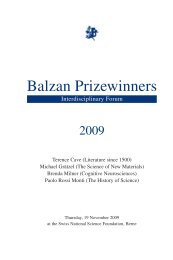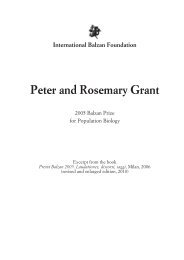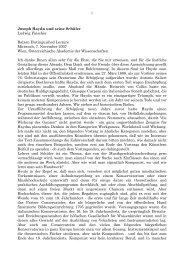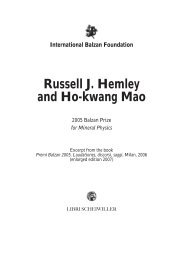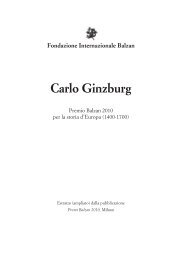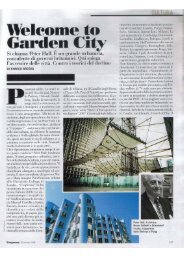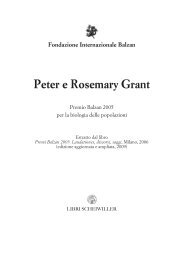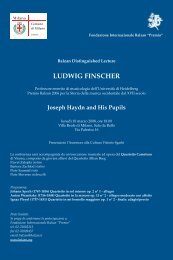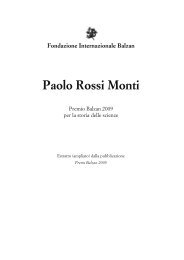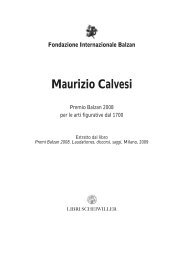International Balzan Foundation Luigi Luca Cavalli
International Balzan Foundation Luigi Luca Cavalli
International Balzan Foundation Luigi Luca Cavalli
You also want an ePaper? Increase the reach of your titles
YUMPU automatically turns print PDFs into web optimized ePapers that Google loves.
<strong>Luigi</strong> <strong>Luca</strong> <strong>Cavalli</strong>-Sforza<br />
and finds that species differ for many single genetic differences. The percentage<br />
of DNA units which happen to be different in two species is related, in a very<br />
simple way, to their evolutionary time separation. But human populations living<br />
today have been separated for a relatively short time. Archaeology shows that<br />
modern humans appeared only a little over one hundred thousand years ago, in<br />
Africa, and spread first to Asia, between 100,000 and 50,000 years ago, and<br />
from South East Asia to Oceania between 60,000 and 40,000 years ago. Europe<br />
was reached about 40,000 years ago from both West Asia and North Africa, and<br />
America from Siberia beginning 15,000 years ago.<br />
Mutation first appears in one individual, and then it spreads to other individuals<br />
only in successive generations, when the individual carrying the mutated type<br />
has several progeny carrying the mutation, either because mutants are favored<br />
by selection and survive easily or have more children, or they are favored by<br />
chance. It usually takes a great number of generations before the mutation is<br />
found in many individuals, and even more for it to replace completely the original<br />
type. Thus between the first appearance of a mutation and the replacement<br />
of the original type there will usually elapse a very long time. During that period<br />
the mutant type is “polymorphic”, i.e. there coexist in the population both the<br />
original (ancestral) type and the mutant one. There are extremely few mutations<br />
that have reached the whole of the human species after its origin in Africa.<br />
In fact, we established that, although the human population has enormous genetic<br />
variation between individuals, 85% of the total human variation is within<br />
single populations, and only 15% between them. We therefore cannot use for<br />
the comparison of different human populations the same measure of genetic<br />
distance useful for comparing different living species, for which an individual<br />
from each species would suffice. For instance, we find that the RH negative type<br />
has a frequency of 50% in some populations, e.g. in the Basque country, a lower<br />
one in England (40%), and 0% in East Asia. Genetic replacement means<br />
transition from 0% to 100%. The difference between Basques and English people<br />
is only 50%-40% = 10% of a complete replacement, and that between<br />
Basques and East Asians 50% . We actually employ slightly more sophisticated<br />
formulas to calculate the genetic distance between two populations, which is, on<br />
average, proportional to the time since the two were separated. It is also essential<br />
to calculate the averages of many genes for these measurements to be valid.<br />
When chance is one of the main factors responsible for change, the only way to<br />
eliminate the uncertainty it causes is to apply the law of large numbers, that is,<br />
use a large number of genetic differences. However, even if we could confine<br />
13



